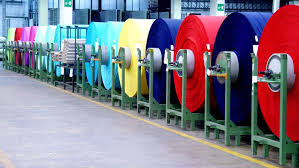Table of Contents
- Introduction to Stretch Fabrics
- How Stretch Fabrics Are Made
- Benefits of Stretch Fabrics
- Everyday Applications
- Innovations in Stretch Fabric Technology
- Care and Maintenance
- Sustainability Concerns and Solutions
- Future of Stretch Fabrics
Introduction to Stretch Fabrics
Stretch fabrics have revolutionized the textile industry by providing versatility and comfort in various applications, from everyday clothing to specialized sportswear. These fabrics, including spandex, lycra, and elastane, are designed to stretch and return to their original shape, offering a snug fit without restricting movement. Their unique properties make them ideal for activewear, dance costumes, and form-fitting garments, ensuring ease of movement and a flattering silhouette. The introduction of stretch fabrics has enhanced comfort and functionality and allowed for more innovative and dynamic designs in fashion.
Leading fabric suppliers have embraced the demand for stretch fabrics, offering designers and manufacturers various options. Companies provide high-quality stretch fabrics that meet the needs of multiple industries. Additionally, suppliers offer innovative stretch materials with enhanced durability and performance features. By sourcing from these reputable suppliers, fashion brands can ensure they are using top-tier stretch fabrics that deliver both comfort and style to consumers. The collaboration between designers and fabric suppliers continues to push the boundaries of what is possible with stretch fabrics, driving the evolution of modern textiles.
How Stretch Fabrics Are Made
The production of stretch fabrics involves blending synthetic fibers, such as spandex, elastane, or lycra, with natural or synthetic fibers. This combination creates a material that can stretch and recover shape, providing comfort and functionality. Elastic threads are woven into the core fibers, often polyester or nylon. This allows the fabric to stretch and take on the body’s shape without losing its original structure.
The process begins with selecting base and elastic fibers for spinning. This creates a yarn that has the desired stretch properties. After that, the yarn is knitted or woven into a fabric to produce a material with multidirectional stretch. Advances in textile engineering have made it possible to produce stretch fabrics that are not only flexible but also breathable and moisture-wicking, enhancing their appeal for various applications.
Benefits of Stretch Fabrics
- Comfort: Stretch fabrics adapt to the body’s contours, ensuring a comfortable fit. During exercise or rest, the material provides a comfortable and flexible fit that adjusts to your body’s movements.
- Flexibility: Ideal for activewear, they allow a full range of motion without restriction. This makes them perfect for activities like yoga, running, and other sports where flexibility and movement are crucial.
- Durability: These fabrics retain shape and withstand regular wear and tear, making them long-lasting. Unlike traditional fabrics, stretch fabrics do not lose their elasticity over time, ensuring they provide the same comfort and fit even after multiple washes.
Everyday Applications
Stretch fabrics are used in everyday clothing, from jeans and leggings to swimsuits and sportswear. They have become a vital component of modern fashion, balancing style and functionality. The flexibility these materials provide is especially beneficial in activewear, as it accommodates various movements and enhances performance.
Stretch fabrics are popular in casual and formal wear, in addition to activewear. Jeans made with stretch fabric offer enhanced comfort and fit, while dresses and suits benefit from the fabric’s ability to provide a tailored appearance without compromising on comfort. The versatility of stretch fabrics makes them suitable for various garments, catering to different fashion needs and preferences.
Innovations in Stretch Fabric Technology
Recent advancements have led to developing more sustainable and high-performance stretch fabrics. New technologies aim to enhance elasticity, strength, and eco-friendliness. Innovations include using recycled materials, eco-friendly dyes, and energy-efficient production methods, which help reduce the environmental impact of fabric production.
Another exciting development in stretch fabric technology is the introduction of intelligent textiles. These fabrics incorporate sensors and other electronic components, allowing them to monitor physiological parameters such as heart rate, body temperature, and muscle activity. Incorporating smart textiles into flexible fabrics presents new opportunities for sports, healthcare, and everyday clothing, offering users immediate data and knowledge to improve their performance and health.
Care and Maintenance
Proper care can extend the life of stretch fabrics. Following washing instructions, avoiding excessive heat, and storing them appropriately are essential. Washing them in cold water and air drying can minimize damage. Additionally, preventing harsh chemicals and extreme heat can preserve the elastic fibers and maintain the fabric’s integrity.
Proper storage is also crucial to maintaining stretch fabrics’ shape and elasticity. Folding the clothes properly and storing them in an excellent, dry location can avoid damage and extend their life. By following these care and maintenance recommendations, you may prolong the life and feel of your stretch fabrics.
Sustainability Concerns and Solutions
While the production of stretch fabrics poses environmental challenges, efforts are being made to develop more sustainable options. Brands and researchers focus on recycling processes, eco-friendly materials, and innovative production methods to reduce the environmental impact.
Sustainable practices in the textile industry include the use of organic fibers, biodegradable materials, and closed-loop production systems that minimize waste and resource consumption. By adopting these practices, manufacturers can reduce the environmental footprint of stretch fabrics, making them a more sustainable choice for consumers.
Future of Stretch Fabrics
The future of stretch fabrics looks promising, with ongoing innovations and sustainable practices. The integration of intelligent textiles and eco-friendly materials is set to transform the industry. As technology develops, stretch fabrics with improved characteristics that provide even more comfort, performance, and environmental advantages should become available.
Developing bio-based elastic fibers and sustainable production methods will further enhance the sustainability of stretch fabrics. Additionally, advancements in textile recycling technologies will make it possible to recycle stretch fabrics more efficiently, reducing waste and conserving resources. With these innovations on the horizon, stretch fabrics are poised to play a significant role in the future of fashion and textiles.

